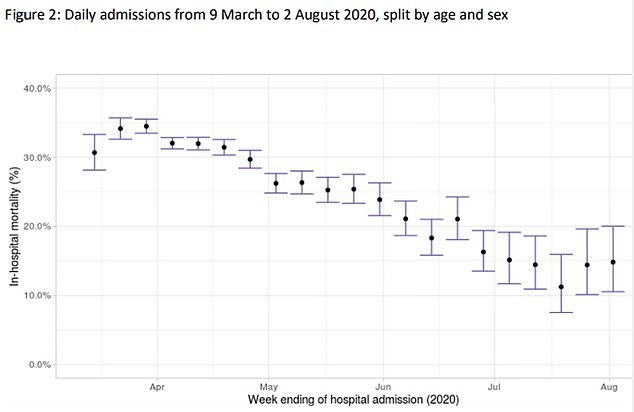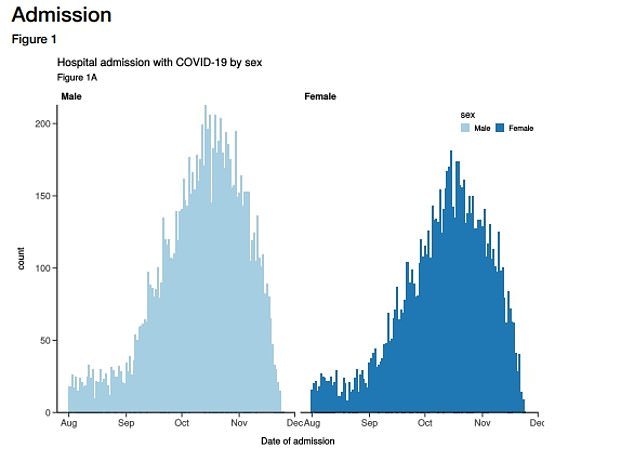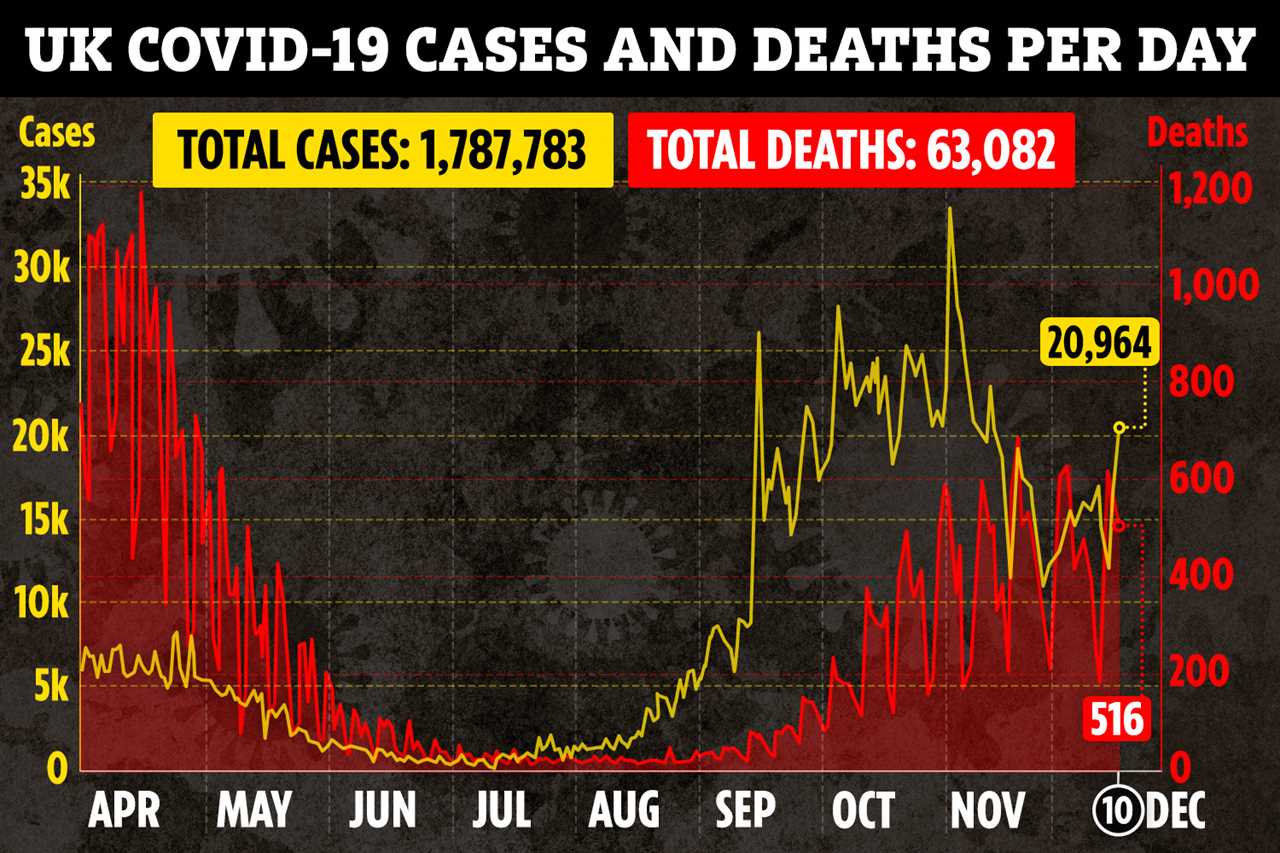THE risk of dying from the coronavirus in British hospitals has halved since the peak of the pandemic, according to research shown to the government’s SAGE committee.
A study submitted to Number Ten reportedly showed that the fatality rate for people admitted in August was 15 percent, down from 35 percent at the start of April.



The rates fell across all demographics – including age groups, sexes, and ethnicities – as well as for both healthy people and those with pre-existing conditions.
The study was conducted by the Coronavirus Clinical Characterisation Consortium (ISARIC4C), a government-backed consortium of doctors and scientists working to understand the virus.
Experts from the group said the falling death rates reflected improvements in the treatments available to patients since the early stages of the pandemic, the Mail reported.
They also said the rates at which the virus is being contracted by elderly people and other vulnerable groups has fallen, partly due to better compliance with social distancing and a greater take-up of masks.
Many hospitals were also working at or near capacity at the peak in April, meaning medics’ time and resources were spread more thinly.
The UK has recorded a total of more than 1.8million coronavirus cases and 63,506 deaths since the first case was confirmed in late January.
At the peak in April, around 4,500 cases were being recorded a day, though it is thought many cases went unrecorded because of a lack of testing capacity.
The peak daily death toll occurred on April 21, when 1,166 people died after testing positive for the virus.
NUMBER OF DEATHS ‘SUBSTANTIALLY DECREASED’
The ISARIC4C research looked at 63,972 of the cases admitted to 247 hospitals between March 15 and August 2, roughly 48 percent of the total.
It found that the number of people dying in hospitals “substantially decreased throughout the course of the first wave”.
“At the peak of admissions in late March and early April, illness severity at several hospital presentations was greatest,” it said.
The study also said that the number of people requiring invasive ventilation decreased over the first months of the pandemic.
“By late June/July, nearly half of all patients admitted required no supplementary oxygen,” it read.
It added that, as the number of people being admitted to hospitals fell, “the reduction in caseload enabled safer staffing”.
It also said that similar patterns were found in hospitals in New York, at one stage the epicentre of the outbreak in the US.

Did you miss our previous article...
https://trendinginthenews.com/covid-19/tv-host-nancy-grace-has-covid-along-with-husband-teen-twins-amp-88yearold-mom






